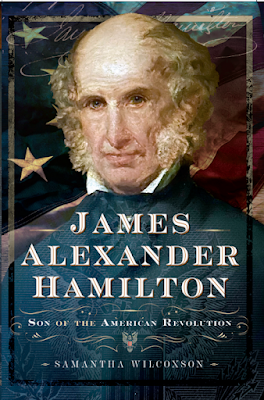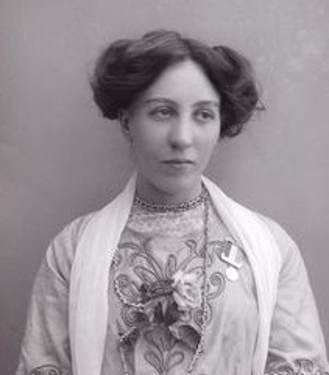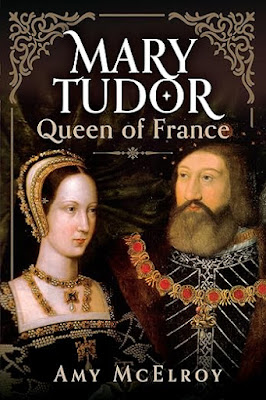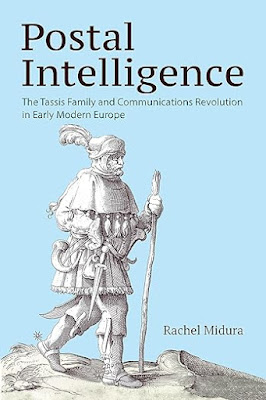Australopithecus Afarensis (Wikimedia Commons)
Ethiopia, 3.2 million years ago
They had been travelling for weeks. The tribe stuck together. They each had their roles to play. Their home had run out of food and resources. They had no choice but to move on. But, day by day, for their matriarch, each step became harder. She could feel every breath becoming heavier, and heavier. Her vision began to blur.
Her lips, cracked. Her throat, hoarse. It had been days since they had encountered any water. She could go no further. Unable to carry on, the tribe set up camp. Moving through the woodland, they collected sticks and leaves to create a number of makeshift nests for the night. With support, the younger, more agile individuals, were able to scale the trees to build nests higher up, away from danger.
Darkness fell over the valley. A thick cloud of mist began its nightly decent; weaving its way through the trees. As she drifted in and out of consciousness, she could still feel the gentle touch of her grandchildren as they came and went. Above her, she could see the shadows of the trees swaying.
The next time her eyes opened, she could see her daughter standing over her, a look of sadness filled her eyes. No words were spoken. They didn’t need to be, nor could they be. In the dead of the night, the mist seemed to clear, and for the briefest of moments, she could see a million lights sparkling above her, filling the vast and empty darkness above. A sense of deepest calm descended. She closed her eyes for the last time, as the rattle of death approached.
Santo Stefano dei Mori, Rome, 1400
The bells tolled. Daylight had broken. It was time to return to chapel for Prime. Lorenzo rolled over, exhausted by another night of broken sleep. He took a deep breath and sat up. He pulled his tunic over his head, before tying it at the waist with a leather belt.
He slipped on his shoes, and made haste for the chapel. With the expected arrival of more pilgrims from Ethiopia, today was going to be another long day.
In silence, they met. The monks of Santo Stefano dei Mori. Without a word to preface it, they began to chant in complete synchronicity:
“Oratio Mosi hominis Dei Dominie refugium tu factus es nobis in generatione et generatione
Priusquam montes fierent et formaretur terra et orbis a saeculo usque in saeculum tu es Deus……”
The dulcet tones filled the chapel, escaping from the open windows, to be carried out on the wind. In spiritual harmony, the chants of the monks reached the ears of the pilgrims. A wearied traveller, Täsfa, looked up. The words of the monks fell upon him and made the hairs on his arms stand on end. He had finally made it. He had spent months travelling here from his homeland in Ethiopia.
He carried nothing with him but a small bag. Inside it, his last, few remaining coins, a knife and fork his father had bestowed on him before he left, and, his most treasured possession – a gift from his young sister – a bracelet of coral and bone. Her family would search for things in the nearby valley. Curiosities that could be sold or traded at market. But there was something about these bones. They were different. They were small, fine and slender.
Like those from a human hand, but smaller. She had hidden them in her pocket. Too special to sell, she made them into a bracelet for her brother. She loved him unconditionally, and they knew when he left for this pilgrimage, that it would be the last time they would likely ever see each other. Täsfa reached into his bag, felt around for the bracelet, and gripped it tightly to feel his sister’s strength, urging him on.
Lorenzo opened the gates and with a welcoming smile greeted the new group of pilgrims. They would need cleaning, feeding, and a place to rest. As they entered, one by one, fellow monks would warmly greet them, and show them where they needed to go. The last pilgrim, a man of average height, looked tired, but held himself up with pride.
He approached Lorenzo, one hand outstretched in introduction, and another, clutching something tightly, hidden within his bag. “My name is Täsfa,” the man said. “I have come here to work.” Lorenzo met Täsfa’s stare. His face warm, but inquiring. “I believe I have a great deal of work to do” Täsfa added. Lorenzo’s face relaxed. There was something in this pilgrim that made him feel he could trust him implicitly. He wasn’t like the others.
He didn’t know what it was just yet, but there was something about him. “All in good time, my brother. But first, let’s get you some food,” Lorenzo responded, placing an arm around this man and leading him to the dining hall.
Hadar, Ethiopia, November 24, 1974
“Another, long day in this sweltering heat and nothing to show for it,” said Donald, as he threw back another piece of animal bone. “You’re right. Let’s head back,” responded Tom. The rest of their team gathered up the maps and tools, and headed in the direction of the Land Rover.
Sofie, the most junior member, was collecting the last of the tools, when she heard what she thought was a low humming. She turned, and peered off into the distance. Unable to see anything, she started to walk in the direction of the others, back up the side of the valley. There it was again. Sofie couldn’t shake off the feeling that there was something there. “Perhaps,” started Sofie, calling out to Donald, Tom and the rest of the team.
They stopped, and looked back, waiting for her to continue. “Perhaps, we could walk back in a different direction? Maybe, through the valley here?” Sofie suggested. Tired after a long day, Donald and Tom, didn’t resist. “A change of scenery might be nice,” shrugged Tom. The team turned around, walking in the direction indicated by Sofie. The humming grew louder. Someone, or something, was calling to her.
All of a sudden, Sofie tripped.
The box of tools she had been carrying scattered out over the dirt. “What on earth was that?” she muttered. She turned around to see her fellow team members staring down at the ground where she had tripped. Sticking out of the earth was a fragment of bone. Slowly, Donald approached it, examining it closely, his eyes grew wide with excitement. In eager anticipation, the team worked quickly, and quietly. Bone by bone, they continued to appear.
They worked on into the night. A campfire, helping to provide light for the delicate work at hand. Carefully, they started piecing the bones together. After hours of work, they stood back, a number of hand bones were missing, but nonetheless they stared in excited disbelief. “Well team, this day will go down in history,” declared Donald. “What we have here,” he continued, “is the skeleton, of, an early human.” The team erupted in cheers.
Drinks were shared, and the song “Lucy in the Sky with Diamonds” crackled away in the background, as they celebrated into the early hours of the morning. Sofie sat at the edge of the excavation, contemplating the life of this ancient ancestor. Who was she? How did she end up here? She tilted her head, and stared up into the shimmering sky above. “Well, what should we name her? She needs a name!” Donald exclaimed. “We should call her Lucy,” Sofie declared as she stared up into the sky.
Cleveland Museum of Natural History, Ohio, 2025
“Children! Children!” shouted the volunteer guide, Rosa. “Have our ears stopped working again?” The school children looked at one another. Some rolled their eyes and giggled, while others continued to talk and laugh. “Can anyone remember how many years ago the dinosaurs lived?” Persisted Rosa, her voice getting shrill in agitation. “Can’t anyone remember?” “I’m so sorry, I think they are done for today” apologised the teacher profusely. “We may as well head back out the front of the museum while we wait for the bus. The kids can have a rest and a run around” suggested a fellow teacher.
The students collected their bags and moved to the lawned area. Some kids ran around playing chasey, while others sat on the ground, plucking the individual blades of grass. “Ok, have we got everyone?” “I think we are missing one.” “What? How can we be missing one?” “Who is it?” Panic descended among the staff. “It’s Ella.” “When was the last time anyone saw her?” With a flurry of activity, museum staff and volunteers were called into action in search of the young girl called Ella.
Elaine spotted her from across the gallery. The young girl, in her tidy uniform, a bow keeping her long mane of hair together, transfixed by an exhibit. “Excuse me,” Elaine bent down to the child. But, as though hypnotised, the girl didn’t respond. “Excuse me. Are you Ella?” Repeated Elaine. Without taking her eyes away, Ella nodded. “Can I help you get back to your class?” Asked Elaine. “But, look!” said Ella. “Look at what?” asked Elaine. “Look,” Ella repeated. “Her name is Lucy, and she looks….. she looks just like us.”
Notes
I recently attended a talk by the wonderful historian, Bettany Hugues, during which, she talked about the concept of genetic memory. Through genetic memory, it has been proposed that some behaviours and experiences are inherited; such as the innately human propensity to wonder.
Personally, there have been countless times where I have caught myself staring up the night sky, wondering about the people who have come before us – what their stories are, and how we are all, in some way, connected. Whether it is one of our early human ancestors, a pilgrim from the late medieval period, an anthropologist working out in the field, or a small child scurrying about at our feet, we are all linked. Our stories woven together in this great tapestry of life.
Notes of a Time Traveller began as a way for me to continue exploring and sharing my love of history. It was during my undergraduate studies in evolutionary biology where I became captivated by the story of Lucy’s discovery. A skeleton of an early human, the species would later be called, Australopithecus Afarensis.
I then spent many years working with some incredible animals. Primates and bears in particular, captured my heart. I would spend hours pouring over books about their ecology, behaviour, and evolution. As time moved on, I was drawn into the world of Tudor history. From which, I am yet to depart. But I am constantly thinking of the lives of the people who have lived before us. How we can tell their stories and what the extant records can tell us about their lives. When we depart this earth, how would we like our story to be told?
Through Notes of a Time Traveller, I share book reviews, pieces of historical fiction, travel, and research. My historical research has begun with the early life of Anne Boleyn, the second Queen of the infamous King Henry VIII. But who knows where it will lead, as I venture through history, exploring the lives of those who have walked this earth before us.
# # #
About the Author
Lucy Menadue is an educator, researcher and writer who lives in South Australia. She has a Bachelor of Science with Honours in Ecology and Evolutionary Biology, and Masters in Education. Lucy has a particular passion for Tudor history, and researching the lives of women. Find out more ar





























.jpg)


